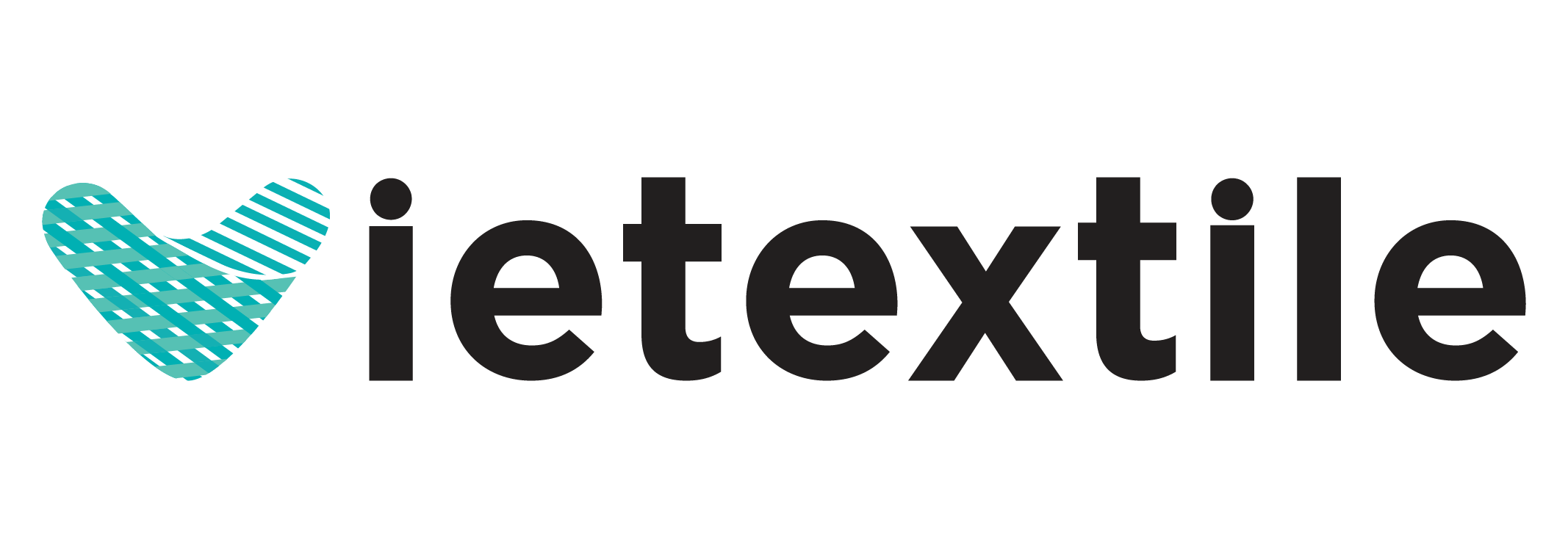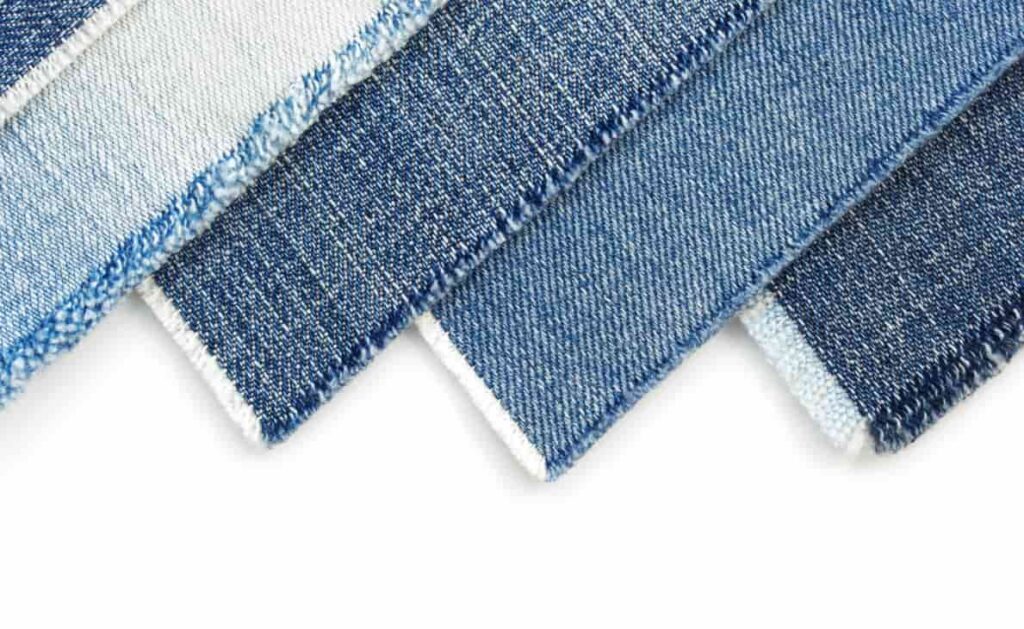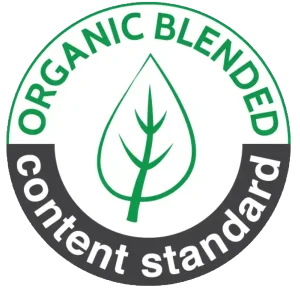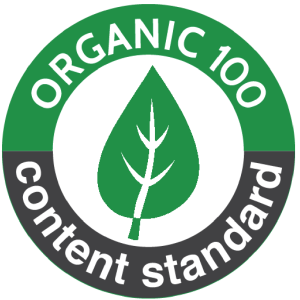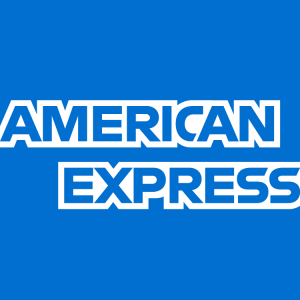Jeans, a timeless fashion icon, are renowned not only for their durable denim fabric but also for the diversity in surface treatment techniques, also known as “wash.” Jeans wash types not only create unique appearances but also affect the hand-feel, softness, and style of each pair of pants. From traditional methods bearing classic imprints to modern, creative techniques, the world of jeans wash continuously evolves, meeting every aesthetic taste and fashion trend.
The Vietnam textile industry, especially in jeans production, has been successfully applying many different jeans wash types. A clear understanding of the differences between these techniques is key for manufacturers and consumers to choose the most suitable product. This article will delve into comparing popular jeans wash types, from traditional methods that made denim famous, to modern, eco-friendly techniques shaping the industry’s future.
We will explore the characteristics, execution processes, advantages, and disadvantages of each wash type, and how they affect the overall style of jeans. The goal is to provide a comprehensive overview, helping readers feel more confident in choosing and evaluating the quality of jeans wash types on the market.
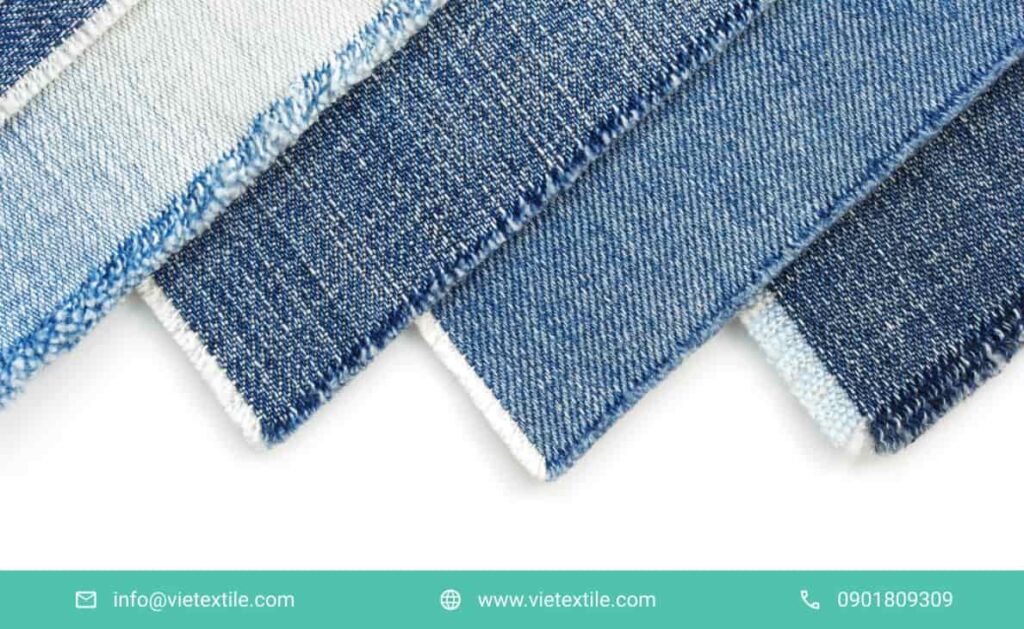
1. Overview of Jeans Wash and Its Importance
Nội dung tóm tắt
ToggleJeans wash is the process of treating the surface of denim fabric after it has been sewn into a product, aiming to create various color effects, abrasion levels, and hand-feels. Initially, jeans wash was performed to soften stiff, raw denim fabric, making it more comfortable for the wearer. However, over time, it has evolved into an art form, creating diversity and individuality for each pair of jeans.
1.1. Concept of Jeans Wash
Jeans wash, also known as denim abrasion washing, is a series of physical and chemical treatment techniques applied to finished jeans. The main purpose is to alter the original color of denim, creating faded, distressed, scratched, or other special effects. Each wash technique will bring a unique appearance and feel, from classic and rugged to modern and refined.
The wash process not only affects color but also impacts the fabric’s fiber structure, softness, and product durability. Choosing the appropriate jeans wash types is a key factor in defining the style and value of jeans in the market.
1.2. Importance of Jeans Wash in Fashion and Production
Jeans wash plays an extremely important role in the fashion and denim production industries. For fashion, jeans wash types are decisive factors for the wearer’s style and personality. A light jeans wash can bring a youthful, dynamic look, while dark jeans wash exude elegance and maturity. The diversity of jeans wash allows designers to create countless collections, meeting every trend and market segment.
In production, jeans wash is a stage that adds significant value to products. It not only transforms stiff, raw jeans into more comfortable products but also creates differentiation, enhancing aesthetic appeal and competitiveness. Mastering modern, eco-friendly jeans wash types is a major advantage for textile factories, especially in Vietnam, where the textile industry is strongly developing.
2. Traditional Jeans Wash Types: Timeless Beauty
Traditional jeans wash types are the foundation of the denim industry, offering classic and enduring beauty. Although some techniques can be resource-intensive, they still retain their value and are widely favored by consumers.
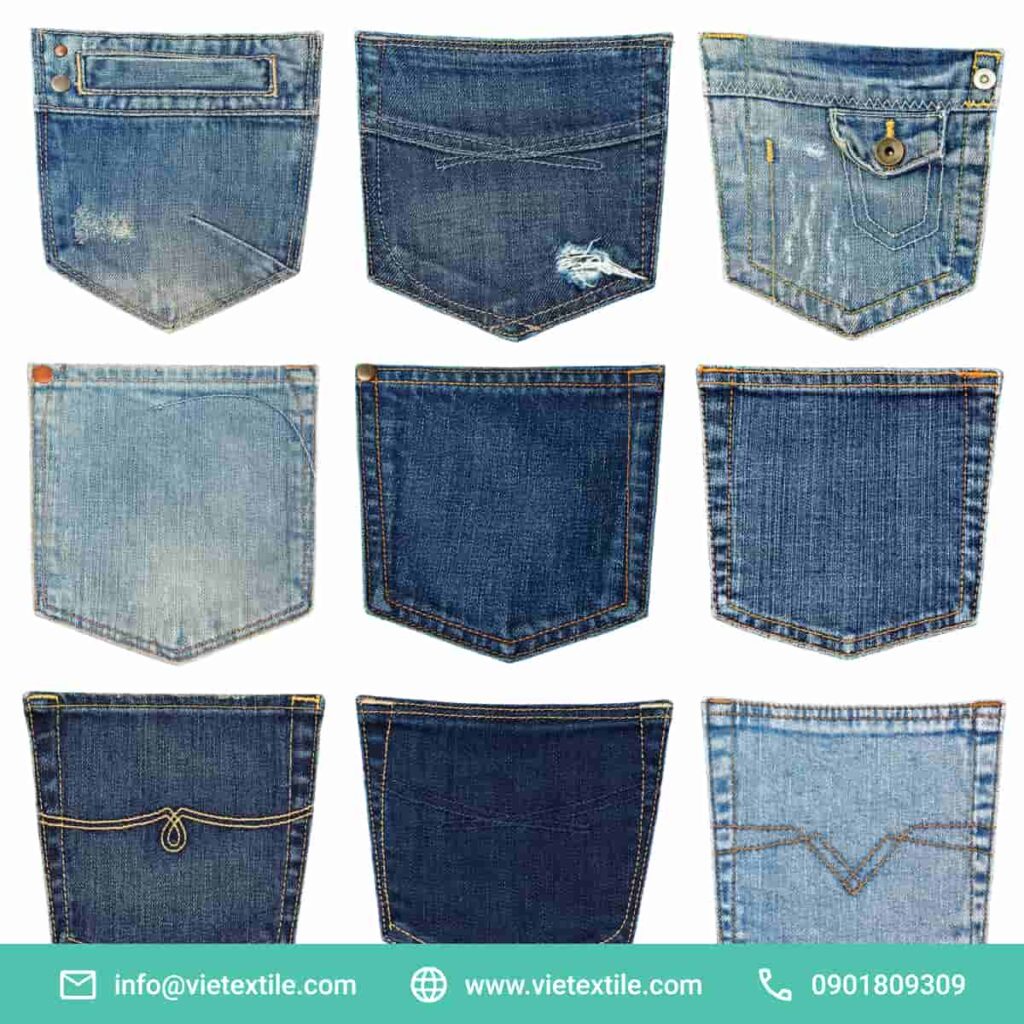
2.1. Stone Wash
Stone wash is one of the most popular and oldest jeans wash types. This process involves adding pumice stones to an industrial washing machine along with jeans. As the machine tumbles, the pumice stones abrade the denim fabric, creating a natural, uneven faded effect, similar to jeans that have been worn and washed many times.
The characteristic of stone wash is to create a natural “worn-in” look, with random light and dark areas. The degree of fading depends on the quantity of stones, stone size, washing time, and machine tumbling speed. Stone wash provides a softer hand-feel for initially stiff denim fabric. However, this technique can cause machine wear and generate a large amount of sludge from pumice stones.
2.2. Acid Wash
Acid wash, also known as snow wash, is a jeans wash type that creates a mottled, bleached-out effect resembling snow on a denim background. This technique uses pumice stones soaked in a chlorine solution (sodium hypochlorite) or strong bleach. When the chemical-soaked stones are added to the washing machine with jeans, they interact with the fabric, randomly bleaching it and creating distinct contrasting light and dark areas.
A prominent feature of acid wash is its strong, personalized “rocker” or “punk” look, very popular in the 1980s. However, acid wash uses strong chemicals, which can be harmful to the environment and reduce fabric durability if not strictly controlled. Wastewater treatment after this process is also a challenge.
2.3. Bleach Wash
Bleach wash is a jeans wash type that uses bleaching agents (typically chlorine or hydrogen peroxide) to uniformly fade denim or create a lighter effect. Jeans are immersed or sprayed with a bleaching solution in a washing machine. The degree of bleaching can be controlled to create colors ranging from light blue to almost completely white.
The characteristic of bleach wash is to create lighter, sometimes pure white colors, providing a fresh, dynamic look. However, using strong bleaching chemicals can weaken fabric fibers, reduce jeans durability, and cause environmental pollution if there is no effective wastewater treatment system.
2.4. Rinse Wash
Rinse wash is the simplest jeans wash type, involving only washing jeans in clean water (usually warm water) once after sewing. The main purpose is to remove fabric sizing, dirt, and soften stiff, raw denim fabric.
The characteristic of rinse wash is that it preserves the original dark blue color of denim, only slightly softens the fabric, and removes initial shrinkage. This is an ideal choice for those who love a classic, minimalist look and want their jeans to retain their natural color for as long as possible. Rinse wash is the most eco-friendly technique among traditional jeans wash types.
3. Modern Jeans Wash Types: Creative and Sustainable
With the development of technology and environmental awareness, modern jeans wash types have emerged to create more unique effects while minimizing negative environmental impacts.
3.1. Laser Wash
Laser wash is one of the most advanced jeans wash types, using laser technology to create abrasion, tearing, scratching, or even complex patterns on the denim surface. The laser beam burns off the dye layer on the fabric surface, exposing the white fibers underneath, creating a precise and uniform faded effect.
Prominent features of laser wash include high customization capability, absolute precision, and pattern reproducibility. More importantly, this technique does not use harmful chemicals and consumes very little water, making it a sustainable option. Laser wash significantly reduces wastewater and chemical usage compared to traditional methods.
3.2. Ozone Wash
Ozone wash is an eco-friendly jeans wash type that uses ozone gas () to fade denim. Jeans are placed in an enclosed chamber where ozone gas is injected. Ozone is a strong oxidizing agent that reacts with indigo dye on the fabric, breaking it down and creating a faded effect.
The characteristic of ozone wash is to create natural, soft, and uniform faded colors compared to acid wash. The biggest advantage is that it uses no water and no harmful chemicals in the bleaching process, helping to reduce water pollution and save energy for drying. After use, ozone gas is converted back into oxygen, causing no harm to the environment.
3.3. Enzyme Wash
Enzyme wash is a jeans wash type that uses cellulase enzymes to soften fabric and create a subtle faded effect. This enzyme partially breaks down cellulose fibers on the fabric surface, exposing the white core of the fibers and providing a softer hand-feel for denim.
The characteristic of enzyme wash is to create a natural, refined faded effect that is not as harsh as stone wash or bleach wash. This technique is more environmentally friendly than traditional methods because enzymes are biodegradable, cause less pollution, and require less water. Enzyme wash makes fabric softer without significantly reducing product durability.
3.4. Ice Wash
Ice wash is a jeans wash type that creates a strong and uneven faded effect, similar to acid wash but with better control. This technique uses pumice stones soaked in an enzyme solution or mild oxidizing agent, which are then added to a cold washing machine with jeans. This process creates distinct light and dark areas, providing a personalized and rugged look.
The characteristic of ice wash is strong color contrast, suitable for streetwear fashion. Although it still uses a certain amount of water, chemical control and process are improved compared to traditional acid wash, helping to reduce environmental impact.
4. Comparing Main Jeans Wash Types: Traditional and Modern
To get a comprehensive overview, comparing traditional and modern jeans wash types is necessary. Each wash type has its own advantages and disadvantages, suitable for different purposes and trends.
| Characteristic / Wash Type | Stone Wash | Acid Wash | Bleach Wash | Rinse Wash | Laser Wash | Ozone Wash | Enzyme Wash |
| Color Effect | Natural, uneven fade | Mottled, bleached out, strong contrast | Uniform light color, can be pure white | Preserves original dark blue color | Precise fade, complex patterns | Natural, soft fade | Subtle, refined fade |
| Hand-feel | Soft | Slightly stiff/rough due to strong chemicals | Can be slightly rough/reduced durability | Slightly soft | Retains original softness | Soft | Very soft |
| Water Usage | High | High | High | Low | Very low | Very low (waterless) | Medium (less than traditional wash) |
| Chemical Usage | None (stones only) | Very high (chlorine) | High (bleaching) | None | None | None (ozone only) | Low (biological enzymes) |
| Environmental Impact | Medium (stone sludge) | High (chemical wastewater) | High (chemical wastewater) | Low | Very low | Very low | Low |
| Precision / Customization | Low (random) | Low (random) | Medium | High (original color control) | Very high (design-specific) | Medium | Medium |
| Investment Cost | Medium | Medium | Medium | Low | High | High | Medium |
| Trend | Classic, durable | Classic, personalized (1980s) | Popular, basic | Classic, minimalist | Modern, sustainable, high-tech | Modern, sustainable, green tech | Modern, sustainable, eco-friendly |
This comparison table clearly shows the shift from traditional jeans wash types heavy on chemicals and water to modern methods, focusing on technology and sustainability. Manufacturers today have more options to create unique products while ensuring environmental responsibility.
5. Development Trends of Jeans Wash Types and the Future of the Denim Industry
The denim industry is constantly innovating, and jeans wash types are no exception. The general trend is towards sustainability, personalization, and production efficiency.
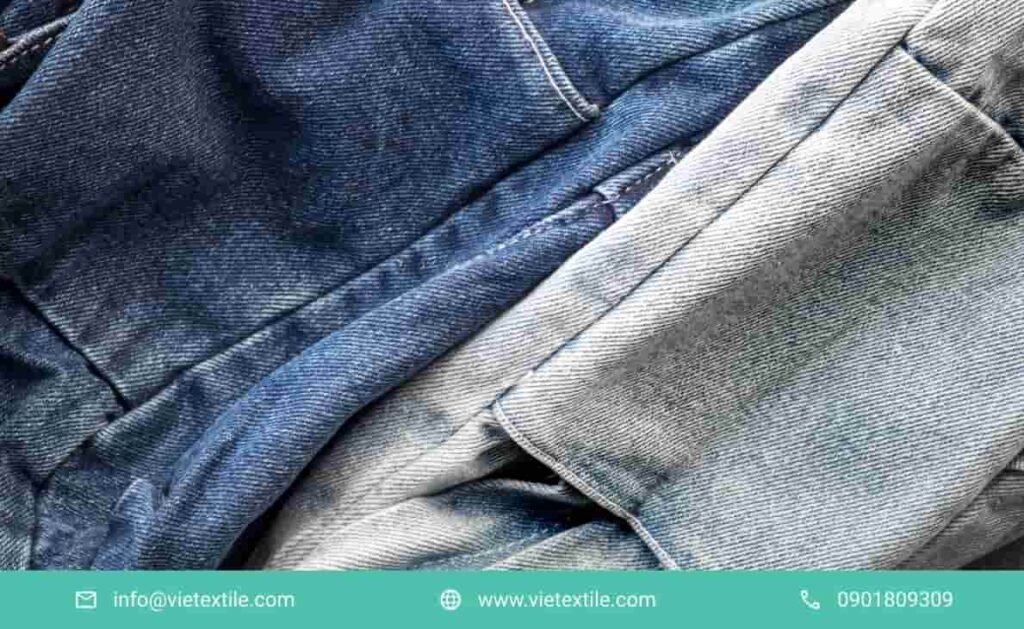
5.1. Sustainability is a Top Priority
In the future, eco-friendly wash techniques such as laser wash, ozone wash, and enzyme wash will increasingly dominate. Pressure from consumers, large brands, and government regulations to reduce pollution will drive the widespread adoption of these technologies. The goal is to produce denim with minimal water and chemical usage, or even no wastewater.
Manufacturers will heavily invest in water recycling systems, using biological chemicals, and renewable energy sources in jeans wash types. This not only helps protect the environment but also enhances brand image and meets the demands of the green market.
5.2. Personalization and Customization
Digital printing and laser wash technology usher in an era of personalization in denim. Consumers can request jeans with unique wash effects, specific patterns, or even personal images directly printed/engraved onto the fabric. This creates a niche market with great potential for customized jeans wash types.
Manufacturers will need to invest in flexible technology, capable of small-batch production on demand to meet this trend. This also helps minimize waste from overproduction.
5.3. Combining Technology and Process Optimization
The future of jeans wash will see the combination of various technologies to create more complex and unique effects. For example, a pair of jeans might be laser-treated for a distressed effect, then ozone washed for overall fading, and finally enzyme washed to increase softness.
Optimizing the entire jeans wash process to achieve the highest efficiency in terms of cost, time, and quality will be a top priority. Automation and data management systems will play a crucial role in controlling and improving this process.
6. VieTextile and Optimal Solutions for Jeans Wash Types
VieTextile proudly stands as a leading partner, providing comprehensive and advanced solutions for jeans wash types in the textile industry. With extensive experience and deep understanding of technology, we are committed to delivering optimal solutions that help businesses enhance production efficiency, minimize environmental impact, and strengthen competitiveness. VieTextile always aims to accompany the sustainable development of the Vietnam textile industry.
We provide a diverse range of modern equipment and technologies for jeans wash types, including advanced denim laser machines, efficient ozone wash systems, specialized enzyme washing machines, and smart wastewater treatment solutions. VieTextile’s products are carefully selected from reputable manufacturers worldwide, ensuring optimal quality, durability, and performance, helping customers create high-quality jeans products that meet market trends.
Additionally, VieTextile also provides in-depth consultation services for designing and optimizing jeans wash types for each product type and production scale. Our team of experts will analyze the business’s specific needs, then propose the most suitable technological solutions, helping clients achieve the highest return on investment. We also support system integration, ensuring smooth and efficient operation, from design to mass production.
We also particularly emphasize technology transfer and human resource training. VieTextile organizes practical training courses, helping clients’ technical teams master the knowledge and skills for operating and maintaining equipment in modern jeans wash types. This ensures that businesses can fully leverage the potential of new technologies and maintain stable, efficient production, meeting international standards for quality and environment.
With a commitment to quality and service, VieTextile aims to be a strategic partner for textile businesses in modernizing jeans wash types. Let us help you optimize production, reduce costs, and build a sustainable future for the Vietnam textile industry. We are always ready to listen and provide the most suitable solutions for your specific requirements, contributing to your success in the market.
7. Frequently Asked Questions About Jeans Wash Types (FAQ)
7.1. What is jeans wash and why is it important in denim production?
Jeans wash is the process of treating the surface of denim fabric after it has been sewn into a product, aiming to create various color effects, abrasion levels, and hand-feels. It is important because it not only softens stiff, raw fabric, increasing wearer comfort, but also is a decisive factor for the style, individuality, and aesthetic value of the pants, helping to diversify products in the fashion market.
7.2. What are the advantages and disadvantages of traditional jeans wash types?
Traditional jeans wash types such as stone wash, acid wash, bleach wash bring classic, rugged, or dynamic beauty. Advantages include natural, familiar effects. Disadvantages are that they often consume a lot of water and chemicals, can cause environmental pollution, and may reduce fabric durability if not well-controlled.
7.3. How has modern technology changed jeans wash types?
Modern technology has brought more eco-friendly and precise jeans wash types such as laser wash, ozone wash, enzyme wash. These techniques significantly reduce water and chemical usage, minimize pollution, and allow for the creation of highly customizable, complex, and uniform effects, meeting the trends of sustainable production and personalization.
7.4. How do laser wash and ozone wash differ?
Laser wash uses a laser beam to burn off the dye layer on the fabric surface, creating precise abrasion effects according to design. Ozone wash uses ozone gas to naturally and uniformly fade denim in an enclosed chamber. Both are modern, eco-friendly jeans wash types that do not use harmful chemicals and save water, but create different effects and processes.
7.5. How do I choose the right jeans wash types for my product?
Choosing the appropriate jeans wash types depends on the product style you aim for (classic, modern, personalized), the type of denim fabric, investment budget, and the business’s environmental commitment. It is advisable to consult experts, research the market, and consider sustainable technologies to optimize production efficiency and meet consumer demands.
8. Contact VieTextile to Optimize Jeans Wash Types
To effectively invest in jeans wash technology, optimize production processes, and achieve sustainable success in the professional textile industry, contact VieTextile today! We are ready to provide comprehensive solutions and accompany your business development in implementing advanced jeans wash types.
Contact Information:
- Hotline: 0901 809 309
- Email: info@vietextile.com
- Website: https://vietextile.com
